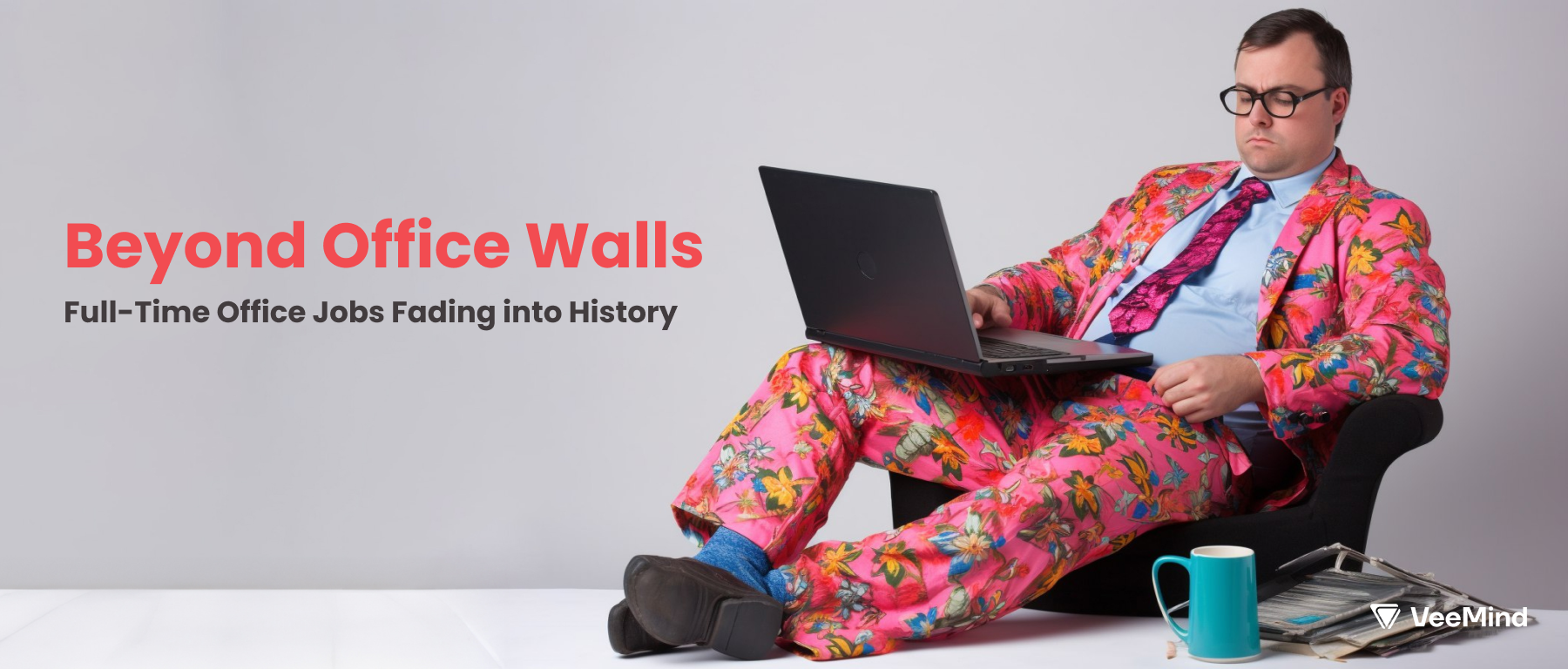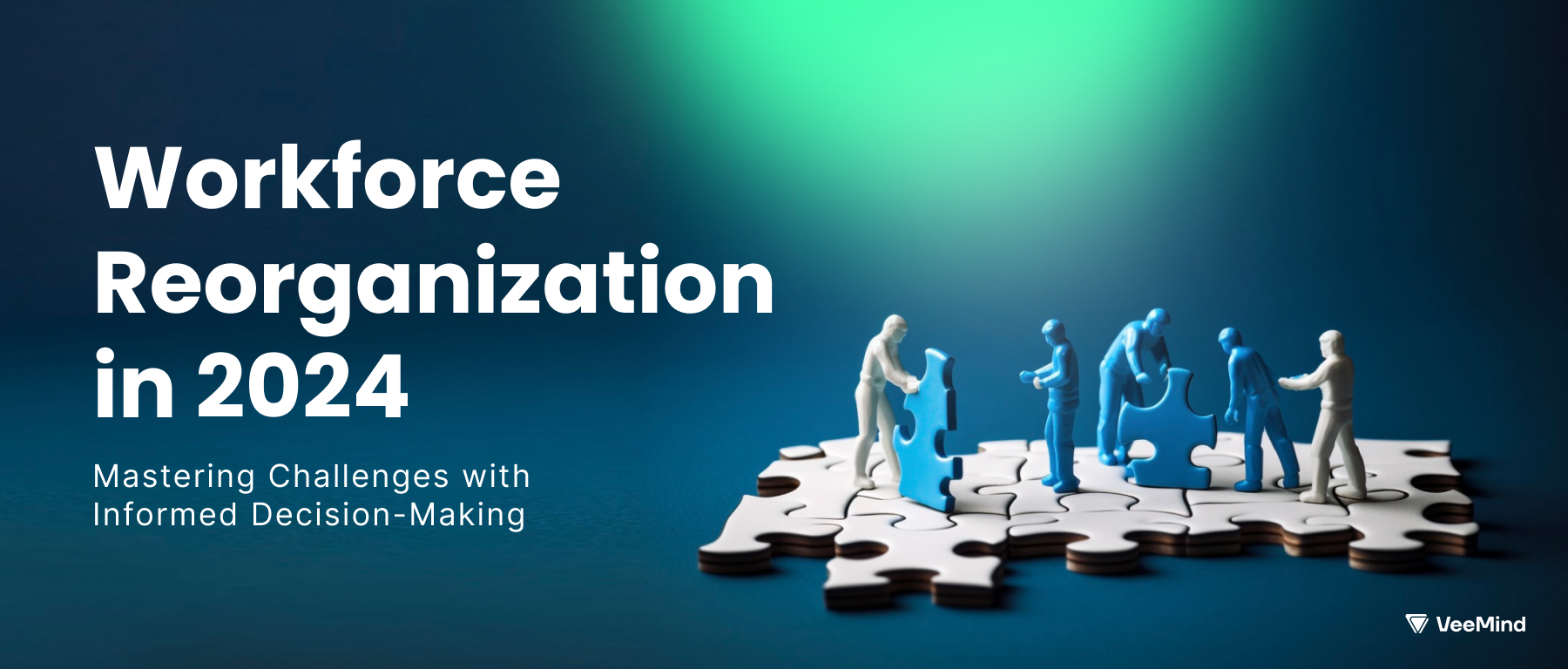Beyond Office Walls: Full-Time Office Jobs Fading into History

The working world has undergone a remarkable transformation over the recent years, unfurling shifts in working hours and a dynamic transformation of attitudes towards work like never before.
COVID-19 has single-handedly shattered the decade-old 9 to 5 office grind, ushering in a revolutionary era of flexible work arrangements.
In February 2022, 84% of employees who transitioned to remote work due to the pandemic expressed their intention to adopt a hybrid work model, alternating between working from home and their traditional workplace, in the foreseeable future.
While hybrid work offers flexibility and new possibilities, it also presents unique challenges for leaders. In this article, we explore the implications of hybrid work and the varying responses of leaders to this evolving landscape.
The year 2023 brings with it a series of shifts in the world of work, prompting organizations, leaders and HR experts to explore new approaches and transformations. As employers navigate these changes, it is essential to understand the standpoints of employees regarding the return to the office.
The Office Debate: Striking a Balance
Flexible and hybrid work arrangements have gained widespread acceptance among office workers, allowing for increased autonomy and work-life integration.
Hybrid work is not an entirely novel concept. It builds upon existing remote work practices and takes advantage of technological advancements and a changing understanding of work-life integration. The pandemic merely served as a catalyst, pushing organizations to adopt hybrid work models sooner than anticipated.
However, large organizations such as Meta, Amazon, Starbucks, and Apple have begun mandating on-site work for a specific number of days per week. While the return to the office can foster collaboration and innovation, it is crucial for organizations to strike a balance. Being too prescriptive about time in the office may hamper employee morale and hinder productivity. It is essential to recognize that work is an activity that can occur in various settings, not solely within the office walls.
Trust as a Challenge: Leveraging Data and Communication
Hybrid work models have demonstrated high levels of productivity, but leaders often struggle with trust and confidence in their teams’ ability to maintain productivity remotely. To address this challenge, organizations should rely on data to showcase the effectiveness of hybrid work arrangements. By utilizing metrics that highlight productivity, outcomes, and employee satisfaction, leaders can build trust and confidence in their teams’ ability to work autonomously.
Shifting Relationship Dynamics: Prioritizing Employee Well-being
The pandemic has amplified the importance of employee health and well-being, prompting organizations to prioritize their workforce’s holistic needs. In response, employers are adopting two-way communication practices and actively listening to their employees. Successful organizations have established open channels for dialogue, allowing employees to voice their concerns, ideas, and aspirations. By fostering a culture of employee engagement and considering their contributions as valuable, organizations can build a stronger bond with their workforce.
Equity, Diversity, and Inclusion (EDI): A Rising Priority
With the entry of Gen Z into the workforce and a growing focus on EDI issues among employees of all ages, companies must prioritize diversity, inclusivity, and equity. Younger generations, in particular, are vocal about social issues and seek workplaces that align with their values. By prioritizing EDI initiatives, organizations can attract and retain top talent while creating a culture that celebrates differences and promotes equality.
Leading the way to a modern workforce
For leaders, embracing hybrid work requires a shift in mindset and an adaptation of leadership approaches. Some leaders readily embrace the change and excel in managing hybrid teams. They understand the value of flexibility, trust their employees, and are adept at leveraging technology to facilitate collaboration and communication.
On the other hand, there are leaders who reluctantly adapt to hybrid work, often seeking external guidance and support. They recognize the need to adjust their leadership style but may struggle to navigate the complexities of managing remote and on-site employees. These leaders may require additional resources and training to effectively lead hybrid teams.
Lastly, there are leaders who either cannot or do not want to adapt to the new normal of hybrid work. Their resistance may stem from a lack of understanding, fear of losing control, or a preference for traditional working models. However, as the prevalence of hybrid work continues to grow, it is crucial for these leaders to recognize the importance of evolving their leadership approach to meet the demands of the changing landscape.
While the exact proportions of these leadership response patterns remain uncertain, it is evident that all three groups exist to a significant extent. The challenge lies in supporting leaders as they navigate the transition to hybrid work, providing resources, training, and guidance to facilitate their adaptation and success.
In this dynamic environment, organizations must invest in leadership development programs that address the unique demands of hybrid work. These programs should focus on fostering communication, building trust, and empowering leaders to effectively manage and motivate hybrid teams. Additionally, organizations should encourage a culture of continuous learning and provide ongoing support to leaders as they navigate the challenges of hybrid work.
Embracing the hybrid work model, Microsoft has recognized its significant advantages, allowing its employees the flexibility to work remotely at least 50% of the time. This arrangement can extend with manager approval, emphasizing the trust and autonomy within the team. By prioritizing a more decentralized workforce, Microsoft has discarded outdated work models, resulting in increased productivity and employee satisfaction.
A recent survey by IWG revealed a strong preference for hybrid work, with 45% of respondents considering job change if required to return full-time to the office, and 61% focusing on hybrid roles for future job opportunities. Furthermore, proximity to workspaces is crucial for employees, with 60% preferring a workspace within a 15-minute commute and 49% within a 45-minute commute. These findings underscore the importance of flexible work models and accessible workspaces in talent retention and recruitment.

Bridging the Gap between Bosses and Workers
A growing disconnect between executives and employees is becoming evident as companies push for a return to the office. While executives, such as those at Goldman Sachs, advocate for a full return to the office, employees express a preference for remote work or a hybrid model. The pandemic has led to multiple delays in return-to-office plans, and when Goldman reopened its U.S. offices, only 50% of its employees returned to the New York headquarters. Young bankers, in particular, are unhappy with the shift and have even threatened to quit if forced to work in the office five days a week.
A study conducted by the Future Forum reveals an “executive-employee disconnect” regarding the return to the office. Employees are more than four times as likely as executives to want to work remotely full time. However, executives tend to design post-pandemic workforce policies without direct input from employees and believe they are transparent, while employees disagree.
In conclusion, the rise of hybrid work is reshaping the working world. Leaders who adapt to this new era and prioritize employee well-being, trust, and inclusion will thrive. By embracing flexibility, fostering open communication, and demonstrating commitment to equity and diversity, organizations can create a dynamic and successful workforce. It’s essential to bridge the gap between executives and employees, listening to their needs and crafting policies that accommodate individual preferences. The future of work lies in embracing change and supporting employees in the evolving workplace landscape.


